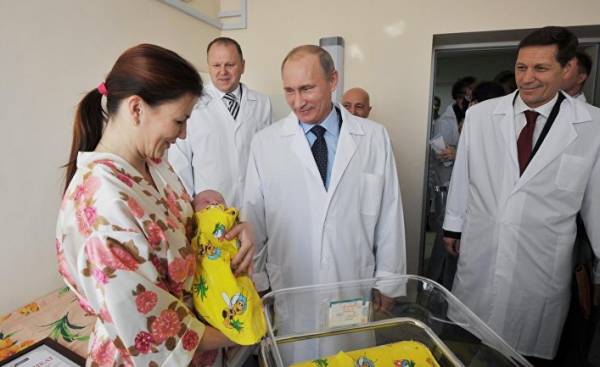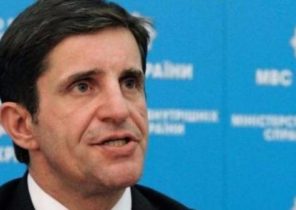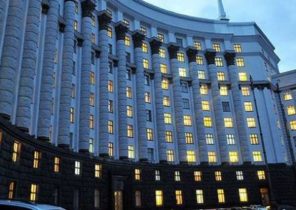
Ilan Berman (Ilan Berman) on Tuesday in the pages of the Moscow Times in dark colors describe the demographic crisis in Russia, referring to the report of the Russian statistical Agency, which refers to “extinction”.
Berman cites Rosstat that in the first four months of 2017 were born in Russia, 70 thousand fewer children than in the corresponding period in 2016. On this basis, he concludes that by 2018, the total population in the country will decrease by 300 thousand people. Now it is a little more than 143 million people, but President Vladimir Putin has made a forecast that by 2050 it is expected to fall to 107 million.
As one of the ways to solve this problem, Putin offered to pay the bonus in the amount of 11 thousand dollars to those families, where at least two children. This is roughly equal to the annual income of the average Russian worker from the middle class, but Berman reports that the results of the program of payment of maternity capital turned out to be insignificant.
Russia rewards the parents who have seven or more children, the order “Parental glory”, but it’s not very helpful.
In the group of countries with demographic problems Russia is doing is very unusual, having developed a formal program for overcoming these difficulties. But apparently, it’s quite uncertain the program is, as its framework has not yet formed an effective policy. Berman offers the Kremlin to abandon big spending on defense and from “foreign adventures in countries such as Ukraine and Syria,” and to spend more money on health and education. But the Kremlin is unlikely to heed his advice.
Putin scheme “rubles in exchange for babies” was not proposed as a crisis measure to overcome the demographic decline. He put it on display as a sign of the inevitable triumph of Russia, and at the same time, he began to banter over the European countries for their low fertility rates. His criticism is not unfounded because in Germany, Italy, Austria, Spain, Greece and Portugal, fertility rates are lower than in Russia, with the latter three countries is much lower.
In December 2016, Putin proudly announced that his policies aimed at taking care of people and “the multiplication of human capital as the main resources of Russia”. Speaking in Parliament, he said he expects the growth of human capital, as in this case, Europe and the United States will lose the opportunity to put pressure on Russia with sanctions. But although the birth rate in the country lately is gaining momentum slowly, it is still much below those figures, which are so confidently said Putin.
Fertility is only one component of the demographic puzzle. In Russia serious problems with the life expectancy of men and drinkers, and there are periodically jump mortality that no one can predict and explain. High birth rate largely compensate for greater mortality, and Vice versa, long life expectancy helps to maintain the population if fertility is seriously reduced.
Despite the gloomy forecasts Ilan Berman, some analysts believe that the birth rate in Russia has recovered sufficiently in order to weaken the demographic crisis. In a March article in Reuters says that the private sector in health care is experiencing a period of rapid growth due to the increase in fertility caused by the desire of new parents to get better medical care than what the state offers.
In addition, we can assume that more affordable and inexpensive private medical services help couples to take risks and the difficulties associated with childbirth. State clinics in Russia creates a not very welcoming environment for mothers and newborns, writes Reuters.
If the situation is corrected, then Russia out of the catastrophic situation in the field of demography, in which she found herself in 2015. One study concludes that up to 30 percent of the deaths in Russia are alcohol-related. Russia is also struggling with addiction and a severe incidence of HIV/AIDS, which contributes to high mortality rates among Russian men. Obviously, men who choose such a tragic and short life, hardly inclined to family life and the upbringing of children.
But we still can’t get past a simple truth, namely that population growth requires a large number of couples with three or more children. And for that, people need to start a family at a fairly young age. Financial incentives can reduce the costs of having children and caring for them, however, Russian experience indicates that population growth alone enough money.







